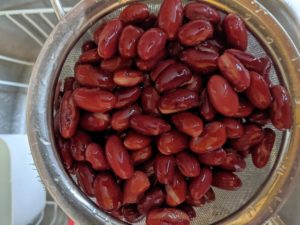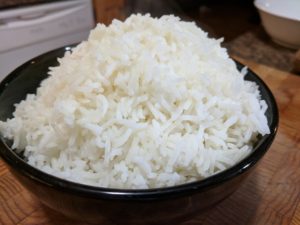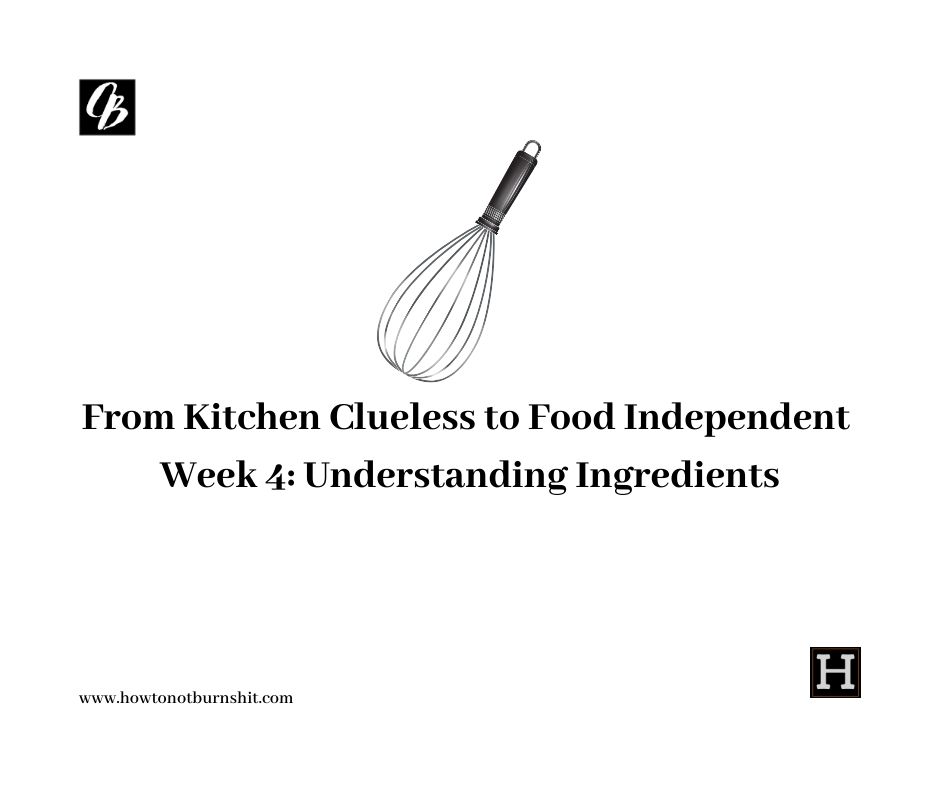Hello everyone and welcome to Week 4 of My Basic Cooking Course. In this lesson, we will be taking a look at some basic ingredients and pantry staples. We are going to take a deep look into a bunch of ingredients that you probably already have on hand and some that maybe you should. We’re going to look at different varieties of common ingredients and best uses. This lesson is broken into two parts. In part one we are going to go deep on beans and rice.
Let’s get to it.
BASIC COOKING COURSE WEEK 4: UNDERSTANDING INGREDIENTS pt.1

Beans
There are at least 40,000 varieties of beans in the world, obviously, we are not going to talk about all of them. Instead, let’s look at them as a whole then we will take a look at a few common varieties.
Beans are generally purchased either dried or canned. Canned beans are already cooked and can be added to a recipe with little to no preparation. They generally just needed to be drained and rinsed. Dried beans, on the other hand, must be rehydrated prior to cooking.
The easiest way to rehydrate beans is to cover them with cold water and but them in the fridge overnight. The beans are then cooked until tender. There is also a quick soak method. To quick-soak the beans cover them with water, bring them to a boil, and cook for 5 minutes. Cover the pot, remove from the heat and let sit for 1 1/2 hours. Then cook as desired.
Are dried beans or canned beans better?
You may be wondering why anyone would buy dry beans and have to go through the trouble of soaking them when canned beans exist and are ready to use. The fact is that canned beans are often very soft and quickly lose their integrity when cooked. Dried beans on the other hand typically hold their shape and bite a bit better when cooked. Some people also claim that canned beans have a different flavour. I think as long as you buy good quality canned beans this will never be an issue.
So, is one better than the other? I think in general, dried beans are better. Having said that, I keep both on hand. Often times I don’t plan out my meals so having canned beans that I can use instantly is useful. However, if I am planning ahead, I prefer dried beans.
Common Type Of Beans
Black Beans –
Black Beans or Black turtle beans have a dense meaty texture and are commonly used in Mexican, Cajun, and Indian cuisines. They go very well with heavy flavoured dishes like curries. Black Beans hold their texture very well when cooked. Can be used either dried or canned.
Cannellini Beans –
Cannellini Beans are most popular in Italian cuisine. They are commonly served with fish or seafood and in soups. When cooked cannellini beans have a soft texture almost like a cooked potato. However, these large white kidney beans do overcook easily and can become mushy. I find these are best to use from dried rather than canned.
Garbanzo Beans (chickpeas) –
Garbanzo Beans are more commonly known as chickpeas. Most people know chickpeas because they are used to make hummus and falafel. However, they also are fantastic in soups, curries, and braises. They can also be ground into flour and used for a variety of purposes. Chickpeas can be used either canned or dried. Canned chickpeas are better for making hummus dried, soaked, and cooked chickpeas are better for making falafel. For all other purposes either dried or canned will do.
Red Kidney Beans –
Kidney Beans come in a variety of sizes and colours. We’ve already talked about white kidney beans or cannellini beans. Now, we are going to talk about red kidney beans. Red kidney beans are most commonly used to make chili and hold up well to long cooking times. Like white kidney beans, the red variety gets soft and fluffy inside when cooked. Canned kidney beans can be overcooked and too soft however they will still work in most dishes. Use either canned or dried.
Navy Beans –
Navy Beans are a type of small white bean that is most commonly used for baked beans, and soups. They hold up very well to long cooking times. Canned navy beans tend to be very soft so I prefer to use dried for most purposes.
Pinto Beans –
Pinto beans are very common in Northwestern Mexican and the Southern United States. They are commonly used to make refried beans, as well as soups, stews, and braises. Pinto beans have a very soft texture when cooked which makes them perfect for mashing. They are also a very flavourful bean. Use either canned or dried.

Rice
Rice is the seed of a certain type of grass that has been cultivated for thousands and thousands of years. It is used by cultures all around the world and eaten daily by billions of people. After sugar and corn rice is the third most commonly produced agricultural product on the planet.
Rice is sold dried either parboiled or not. Parboiled rice is rice that has been partially cooked and then dried again. This rice takes less time to rehydrate and cook than standard rice.
There are over 40 000 varieties of cultivated rice and at least an additional 50 000 that are not generally cultivated. Despite this, there are only a few varieties that you will come across.
Though there are many, many different varieties of rice and we will get into some of the specific ones in a minute, there are a few categories that most fall into. They are long-grain, medium-grain, and short-grain.
Long-Grain Rice
Long grain rice varieties generally have a lower starch content than the other two categories. Because of this the rice grains generally don’t clump like some other rice. You most commonly find long grain rice in Indian and Mexican cuisines.
Rice in this category includes basmati, jasmine, and basic white rice. When cooked these rice varieties generally how a soft fluffy texture.
Medium-Grain Rice
Medium-Grain Rice is more short and stout than long-grained rice. Due to a higher starch content medium-grain, rice varieties have a tendency to stick together more. This higher starch content also gives these rice varieties a more firm texture than long-grain varieties.
Medium-grain rice varieties included arborio, carnaroli rice, and bomba rice. The first two in this list are most commonly used to make risotto. The third variety is used to make Spanish Paella.
Short-Grain Rice
Short-grain rice varieties have the smallest grains and the highest starch content. These types of rice are generally very sticky and gelatinous. The most common type of short-grain rice is simply known as sushi rice or sticky rice and is of course used to make sushi.
More on rice
This method of breaking down rice based on grain size is surprisingly unscientific. Depending on the source of your information medium and short-grain may be interchangeable. So, don’t rely too much on the exact category of rice falls into. Just remember that if you want rice that is light and fluffy, look for a long-grained variety. For rice with a higher starch content get a shorter variety.
Conclusion
Okay, I know we have only really looked at beans and rice today but I am going to end the lesson here. Next week, we will pick back up with basic ingredients. The ingredients we will cover next week won’t require such an in-depth look as both rice and beans so we will be able to cover more ground.
I hope that you have enjoyed this lesson. If you have yet gone over weeks 1 through 3 you can do so here, here, and here. See you next week, and remember to share this lesson with anyone who you think could benefit from it.


0 Comments
Trackbacks/Pingbacks